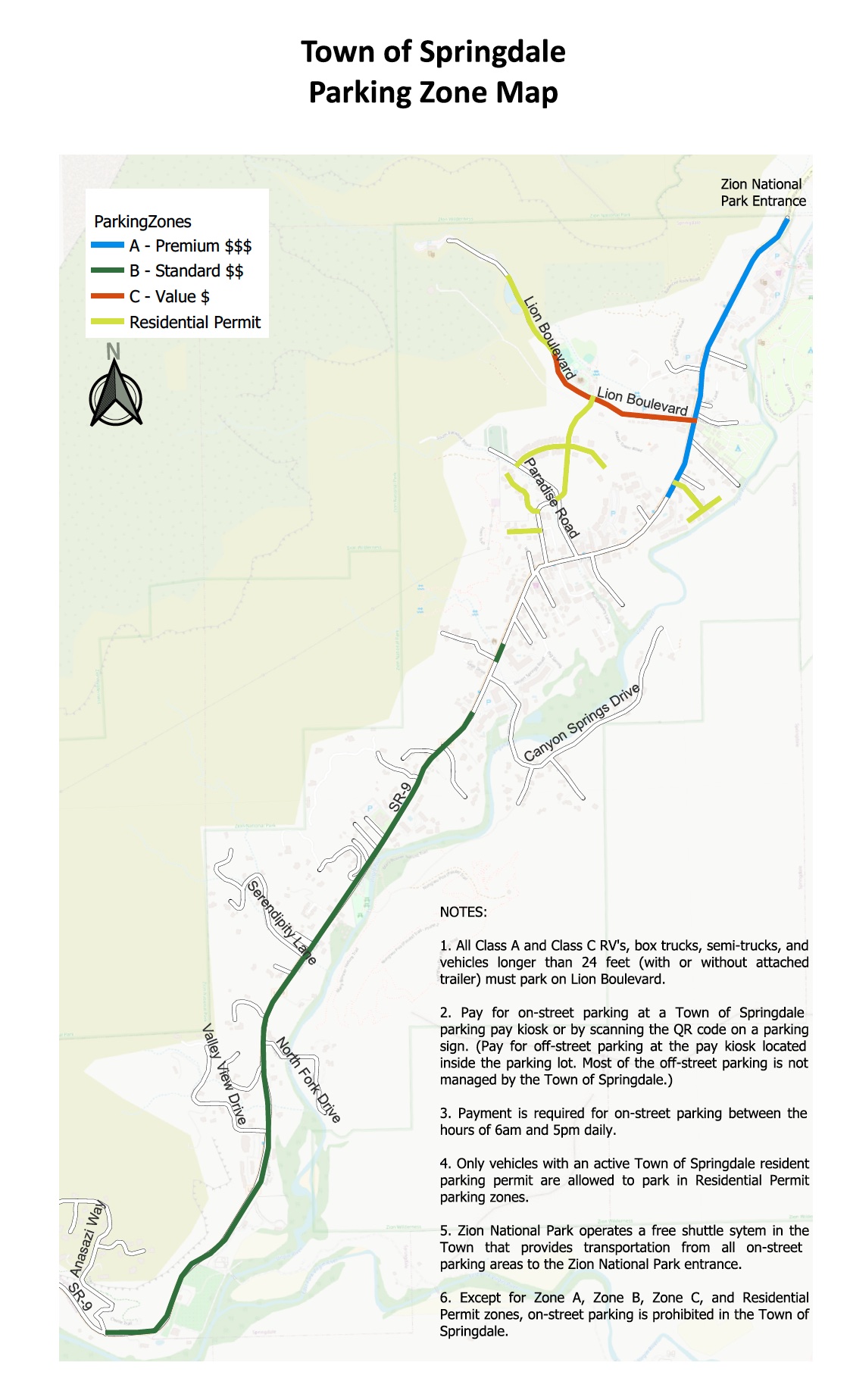ZION AREA TRAVEL RESOURCES //
Navigating Zion Traffic
Traveling on SR-9 to Zion National Park? Scroll down for public transit info, parking, cycling, and other resources.
TAKE PUBLIC TRANSIT IN THE ZION AREA
All visitors are encouraged to utilize public transit or carpool when traveling to Zion National Park. Within the park, the Zion Canyon Shuttle System is the only way to access Zion Canyon from spring through fall, aside from walking or biking.
ZION CANYON SHUTTLE SYSTEM
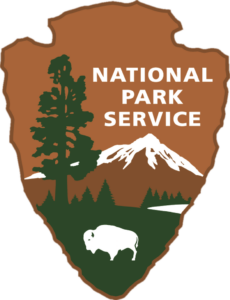
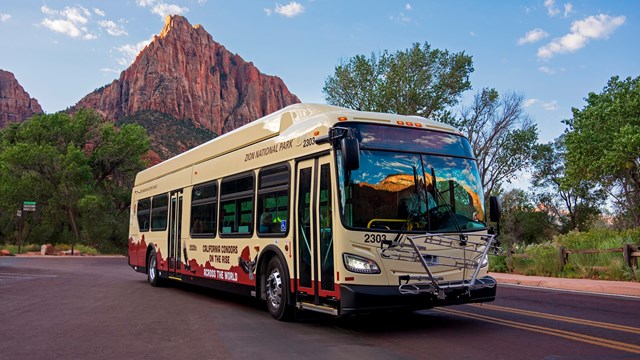
The Zion Canyon Shuttle System operates from March through November, and during the holiday period at the end of December. It’s free to ride, with no reservation or ticket required.
Personal vehicles are not allowed on Zion Canyon Scenic Drive during the shuttle season, including overnight.
There are two lines on the Zion Canyon Shuttle System:
- Zion Canyon Line: Shuttles run every 5-10 minutes between the Zion Canyon Visitor Center and the Temple of Sinawava.
- Springdale Line: Shuttles run every 10-15 minutes between the Hotel De Novo and Zion Canyon Village.

SUNTRAN
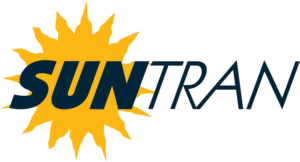
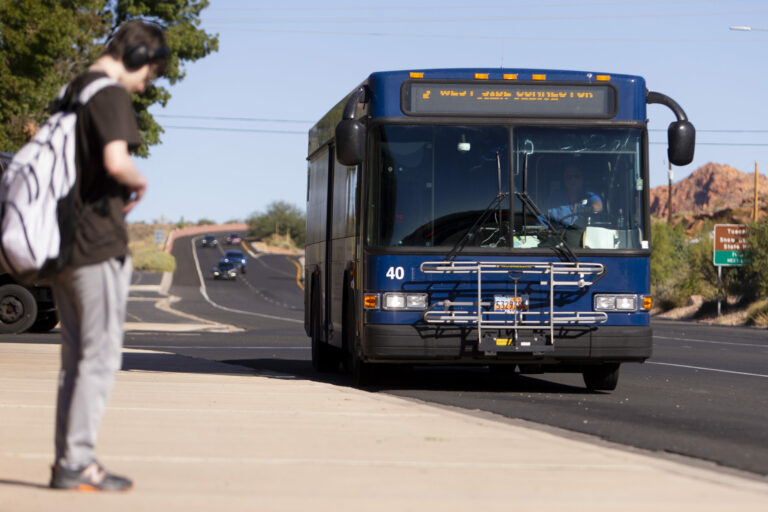
SunTran connects St. George and Springdale, with stops in Washington, Hurricane, La Verkin, and Virgin. The fare is $5 each way. There is no service on Sundays or the following holidays:
- New Year’s Day
- Memorial Day
- Independence Day
- Utah Pioneer Day (July 24)
- Labor Day
- Thanksgiving Day
- Christmas Day
To locate a bus, use the vehicle locator tool here, or download the app on the App Store or Google Play.

WHERE TO PARK IN ZION NATIONAL PARK
Zion National Park has parking available at the Zion Canyon Visitor Center, at the Zion Human History Museum, and near the Zion Nature Center.
- These lots often fill early in the day.
- Outside of shuttle season, visitors may drive in Zion Canyon, but trailhead parking is limited.
- Parking is not allowed on the road.
On the east side of the park, limited parking is available at the East Rim and Canyon Overlook trailheads. Kolob Canyons also has limited parking at its visitor center and trailheads. The shuttle system does not serve these areas.
WHERE TO PARK IN SPRINGDALE
Paid parking is available in Springdale. See the map for locations and rates, with more information on the city website and please keep this in mind:
- All Class A and Class C RV’s, box trucks, semi-trucks, and vehicles longer than 24 feet (with or without attached trailer) must park on Lion Boulevard.
- Pay for on-street parking at a Town of Springdale parking pay kiosk or by scanning the QR code on a parking sign. (Pay for off-street parking at the pay kiosk located inside the parking lot. Most of the off-street parking is not managed by the Town of Springdale.)
- Payment is required for on-street parking between the hours of 6am and 5pm daily.
- Only vehicles with an active Town of Springdale resident parking permit are allowed to park in Residential Permit parking zones.
- Zion National Park operates a free shuttle system in the Town that provides transportation from all on-street parking areas to the Zion National Park entrance.
- Except for Zone A, Zone B, Zone C, and Residential Permit zones, on-street parking is prohibited in the Town of Springdale.
On-street Parking Rates
On Street Paid parking and enforcement hours are 6 a.m. - 5 p.m. daily.
Standard Vehicles
ZONE A: $25 all day / $20 half day after 1 p.m.
ZONE B: $20 all day / $15 half day after 1 p.m.
ZONE C: $15 all day / $10 half day after 1 p.m.
Oversized Vehicles / ZONE C ONLY
$30 all day / $15 half day after 1 p.m.
RIDE A BIKE IN ZION NATIONAL PARK
Bicycles, including e-bikes, are allowed on the paved Pa’rus Trail and on all roads except in the Zion-Mount Carmel Tunnel. Make sure you understand these rules and tips before you ride:
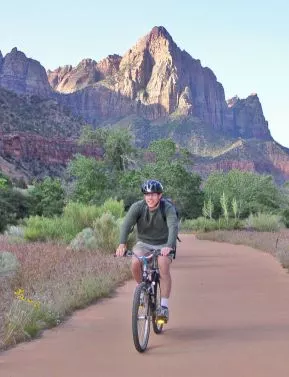
Pa’rus Trail
- The speed limit is 15 miles per hour.
- You must yield the right of way to pedestrians.
- You must warn pedestrians before passing.
Zion Canyon Scenic Drive
- You must yield to oncoming traffic.
- You must pull over to the side of the road and come to a complete stop when a shuttle is approaching behind you. The shuttles will not pass cyclists, so this helps keep traffic flowing safely.
- You may not pass a moving shuttle.
- The Canyon Junction and Weeping Rock areas have limited sight corridors and narrow lanes. Use caution!
- Regular bicycles are allowed on the park shuttles, but e-bikes are not.
Other park roads
- You cannot cycle through the Zion-Mount Carmel Tunnel due to safety concerns.
- Zion-Mount Carmel Highway, Kolob Canyons Road, and Kolob Terrace Road have steep grades, sharp curves, and narrow sections with no shoulder. Use caution!
For all rides
- You must ride single file on the right side of the road.
- Limit your group to six cyclists or fewer.
- Wear a helmet — required for children under 18.
- Obey all traffic signs.
SOUTHERN UTAH TRAIL SYSTEM
The Zion area offers incredible opportunities for active transportation, allowing visitors to access many recreation areas by walking or cycling. There are numerous paved and unpaved trails for all levels.
The map below (provided by the Southern Utah Bicycle Alliance) displays most of the bike routes, multi-use trails, and plans in the greater St. George area. Zoom and pan to discover current and planned trails.
If you click on “Open in CalTopo” in the upper left corner, an interactive map will open up for you to further explore and download track(s). Each path and route can be downloaded onto your device in GPX format for navigation. The interactive map will give you options to view detailed information about each trail.
Enjoy your exploring!
#TravelWise in the Zion area
TravelWise is a set of actions that encourage Utahns and visitors to reduce energy consumption, optimize mobility and improve air quality — ultimately improving quality of life. So what are the actions that apply to the Zion National Park area to relieve traffic congestion and prevent unnecessary car emissions?
- Follow @UDOTZionArea on social media for road status updates
- Download the UDOT Traffic App for statewide road conditions
- Check the Zion Area travel dashboard
- Check traffic cameras
- Don’t travel alone, ride with friends!
- Wait for the next available shuttle into the park
- Plan your travel route through Springdale and the park or to/from St. George
- Plan your trip for the shoulder season when the shuttle is running but crowds are slightly less (March, April, or November)
- Adjust your visit to the afternoon or evening when traffic calms down a bit
- Leave early when inclement weather or flash flooding is forecasted
- Enjoy a different recreation activity or area when traffic congestion is high at the main Zion National Park entrance
- Walk or bike to your destination (when it’s safe to do so)
- Walk or bike to meet your carpool or bus/shuttle

